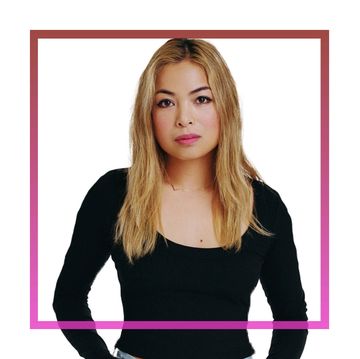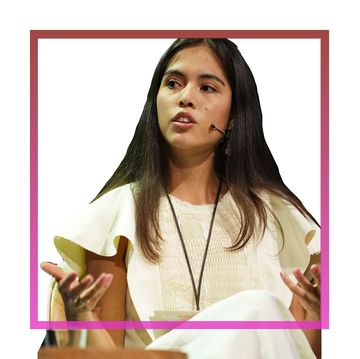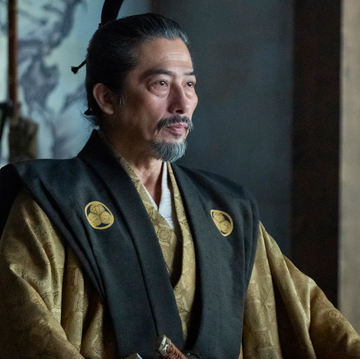Whenever there’s forward momentum in social justice, anti-racism or feminism, you can count on there being a backlash. So we can’t be surprised or dissuaded by the fact that two steps forward often creates one step back – sometimes even more. And so, realising we’re part of a historical human narrative of forward momentum and backward momentum is helpful. I’m glad to have been part of the forward momentum.
I’m currently in Europe on a break [from the States]. The level of rancour and hostility about this work I do means that every day I open the paper or turn on the TV and see that the attack on critical race theory and intersectionality is an attack on the entirety of anti-racism. And I think now people will see that it’s also an attack on women’s rights and the past nearly 75 years of work that has been painstaking, difficult and in some instances bloody to accomplish.
As Angela Davis said, ‘Freedom is a constant struggle.’ It’s not that you get to a place and then everybody can rest on their laurels. Our societies are like rubber bands. You can stretch them so they open. But you’ve got to keep that pressure on, because the natural tendency is to snap back to what it had been for so long. And we’re talking about centuries of women’s bodies basically being used as vessels for the needs and the prerogatives of society or religion. The concept that we have sole dominion over our bodies is actually a new idea. And I think it has often been difficult to convey how much pressure has to be sustained to maintain our freedom. One of the consequences of the disinformation about feminism has been that generations of young women don’t often identify with it. They don’t know that the world they have been born into didn’t just arrive because of the good graces of the societies that we live in. It was the product of hard-fought struggles by people who embraced the values of feminism.
Organising cannot just be virtual action or virtue signalling – we are going to have to come out from behind our computer screens. We’re going to have to gather in real spaces. This [attack on abortion and basic human rights] hasn’t happened in a long time. For some people, it’s never happened. There will be coerced pregnancies and childbirths. We have to look at what is happening on the ground to real bodies that are coming under the control of individuals who have state power now. And that is different from the virtual world where there is a sense of social-justice warriors who are typing and correcting. And there’s much to be said for that. But at the end of the day, what really is going to matter more than what we tweet is what we do about all of those rights that people are losing, and all of the concrete ways that girls and women are now inheriting a situation in which their freedoms are limited. Fighting for our rights will not exist solely in the virtual space.
It didn’t occur to people that things could deteriorate really rapidly. So part of why I wanted to get away and travel to Europe is to have a little bit of distance. When I travel, I try to be as incognito as possible. Although it was funny because, as I was coming out of the airport during a recent visit to Lisbon, the car stopped at a traffic light by a big billboard. And it was a picture of a diverse group of people by gender, race and age, and underneath it said, ‘interseccionalidade’ [the Portuguese translation of ‘intersectionality’]. I was astonished and happy to see that this term so widely associated with making space for inclusion made it there, and that millions of people see the value in it. So every now and then I’ll run into something like that, which reminds me there is something worth fighting for. It’s helpful on days when you don’t know how to balance the incredibly organised effort to disinform people about an idea that has travelled for 30 years.
There was a honeymoon period when critical race theory and intersectionality jumped out of academia and into the mainstream. The first place it found fertile ground was in international human-rights spaces in some of the world conferences. It was particularly vibrant in the World Conference Against Racism in 2001. And, of course, racism typically had not been gendered. People didn’t think about the various ways that discrimination and intolerance played out across gender. So intersectionality was really useful for NGOs and activists to create a door into the World Conference Against Racism, and that was really satisfying and helpful. And I thought it was going to kind of stay there. Then I started getting hints that these ideas had moved into popular culture. A fact-checker from Vanity Fair called me one day to ask how my name was spelled, and my partner was watching the show Succession and the characters were talking about intersectionality. So it was really fun to see the work being taken up into popular culture in that way.
Then in 2020 President Trump issued an executive order [establishing a national commission to promote ‘patriotic education’ in schools] and gave a speech in which he said critical race theory and the 1619 project – and basically, the entire apparatus of anti-racism – were anti-American. And that started this firestorm of attacks and lies. It came at a time when people were trying to fight voter suppression and fight against the upcoming election being stolen. And while he did rescind the order, the horse had left the barn by that point, and Republicans had taken this to multiple state legislatures to basically equate critical race theory with racism, and to try to bar it from being taught in schools.
So you had millions of people in the streets, not only in the United States but all around the world, marching in the aftermath of George Floyd and Breonna Taylor. You had corporations saying they were anti-racist institutions, and there was massive news coverage. It was pretty clear something was going to come after that. What I didn’t know was that the thing would have a name that I had come up with. And that has been both disconcerting and frustrating.
A lot of people who do diversity, equity and inclusion work and LGBTQIA+ work were not initially aware that this thing would implicate everybody. So my work now is to try to make it clear to people that, although they’re using critical race theory as the name, the objective is far greater than just that academic legal theory – they’re going after everything we’ve accomplished in the last century.
How to hold on to hope? I think of my friend and mentor, the voting-rights expert Barbara R Arnwine. I always asked her how she kept positive energy to put one foot in front of the other. And she put it simply: ‘Dogs don’t bark at parked cars.’ When something is on the move, that galvanises the opposition to come after it. So when we are making progress, that happens. They are going after ideas that make alternative ways of living possible.
If you can imagine it, you can create it. Barbara also says, ‘You have to believe that we can win.’ When you believe that we can win, each of these moments become part of a puzzle. There is a way out, we just have to figure out what it is. And so, when I’m truly struggling, I remember that the people who created the civil-rights movement, the people who created the women’s-rights movement, they were starting at a time when there really was no reason to hope that the transformations that happened could possibly happen as profoundly as they did. And yet they put together infrastructures. They put together ideas. They galvanised people.
So when I think about what the world looked like when I was born, and what it took for people to create pathways to this moment, I say, ‘How can I afford to give up when so many people put so much on the line for us to get to where we are?’
This article appears in ELLE's September 2022 issue, on sale on July 28.














